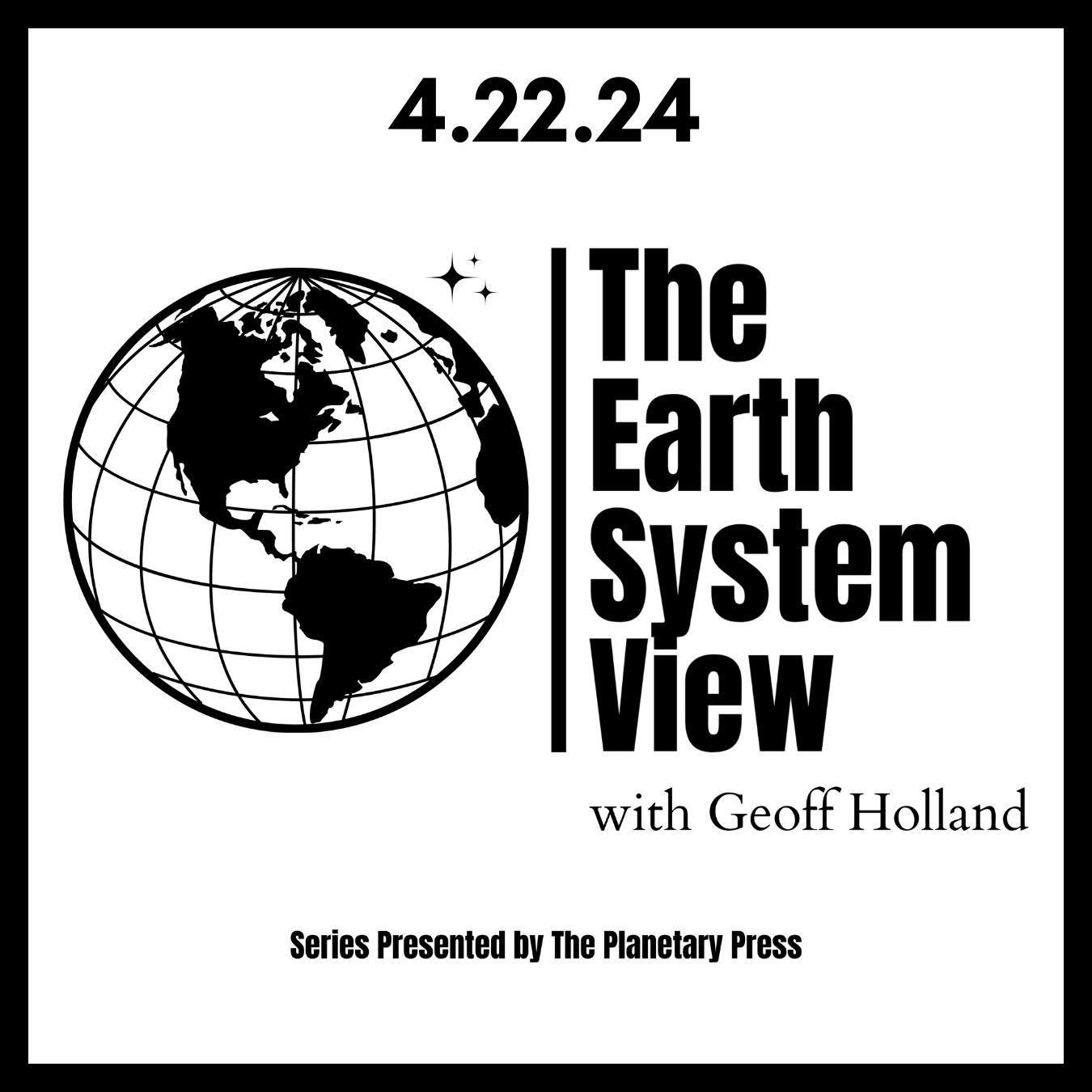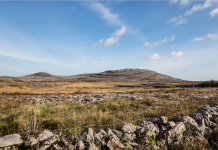Written by: Geoffrey Holland
“The Earth is what we all have in common.”
Wendell Berry, American Cultural Critic
Humanity, all of humanity, has arrived at a daunting point of reckoning. All of the world’s people—all genders, ethnicities, and nationalities—are caught up in this monumental survival test. The big-picture threats that loom are too often lost in the mindless cultural cacophony that consumes our attention and blinds us to our reality.
When people choose to focus on the big picture, what is undeniable is the burgeoning destruction of our planet’s life systems, the same life systems that we all depend on.
The people of planet Earth, all of the people, share responsibility for the dark corner we find ourselves in, and for getting ourselves out of the mess we have created.
“Only when the last tree has died, and the last river been poisoned, and the last fish been caught will we realize we cannot eat money.”
Cree Proverb
The Future of Life on Our Planet is at Risk
Our simple reality: It took all of human history for our numbers to reach 2 billion around World War II. Since then, the population has quadrupled to more than eight billion, and at least two billion more are expected by the end of this century.
Our demands are stressing our planet, our only home, to its limits. One fact profoundly reflects that story: In the same eight decades that the human population quadrupled to more than eight billion, wild animal populations on Earth have collapsed by nearly 70 percent.
In fact, our planet’s precious and irreplaceable biodiversity is on the way to extermination. The simple reality is our Earth’s biosphere and all of Earth’s living systems are being pushed beyond their limits by human demands. We are entirely responsible for triggering and fueling the unprecedented test of survival that looms.
“If you look at Earth from space, you see a dot, that’s here. That’s home. That’s us. It underscores the responsibility to deal more kindly and compassionately with one another and to preserve and cherish that pale blue dot, the only home we’ve ever known.”
Carl Sagan, Astrophysicist, Son of the Cosmos
Caught in a Planetary-Scale Death Spiral
Culturally, we have tended to focus our anxiety and concern on climate. There is no question that climate change is real and is causing ever more extreme weather worldwide, ever more frequently. But our troubles don’t stop there.
In his best-selling book How to Fix a Broken Planet, Australian science author Julian Cribb identifies the following ten existential threats impacting all of life on Earth.
The Ten Existential Threats to Humanity:
- Rapid decline of vital natural resources, like water, soil, fish, and forests, driving a global crisis
- Collapse of ecosystems, causing mass extinction of animals and plants
- Massive human population growth, substantially exceeding the planet’s carrying capacity
- Global heating, sea level rise, and changes in the Earth’s climate imperiling our food supply and affecting all human activity
- Chemical emissions poisoning every human and living creature on Earth
- Growing threats to humanity’s food security
- A rising risk of nuclear war
- New pandemics and untreatable diseases
- Powerful, uncontrolled new technologies that will change and can ruin all our lives
- On top of all that, there’s a flood of lies and misinformation leading to global failure to understand and act on these risks
No thoughtful person in touch with reality would deny any of these threats. There is also no denying the impact they will have on every person living on Earth and on the living systems we all depend on for survival. There is also no denying the civilization-scale consequences if we fail to respond decisively.
“You never change things by fighting the existing reality. To change something, build a new model that makes the existing model obsolete.”
Buckminster Fuller, Dymaxion Thinker
The Urgent Need for Common Human Purpose
Planetary-scale challenges demand the same level of human commitment. To achieve that, we must come together behind a worthy vision that can inspire and guide humanity to the best kind of future, the kind of future we as citizens here and now have an obligation to make possible for the human generations that will follow us in the years ahead.
In response to our world’s great need for common commitment, the Australian Council for the Human Future has teamed with author Julian Cribb to launch a worthy response to these existential threats. They call their very big idea the Earth System Treaty.
“Endorsing the Earth System Treaty (EST) is a direct investment in our collective future. In a rapidly changing world, where technological and environmental shifts are exponential, the EST serves as an indispensable roadmap. It challenges the deep-rooted speciesism that has driven human ego and domination, redirecting our collective energies toward intentional stewardship. Your support for the EST isn’t merely a signature; it’s our guiding compass as we accelerate toward a biogeotechnological event horizon, akin to Kurzweil’s Singularity.”
Brian Swartz, UC Berkeley, Author of Speciesism in Biology and Culture: How Human Exceptionalism is Pushing Planetary Boundaries
The Earth System Treaty as a Cultural Beacon
Those of us who stand behind this Earth System Treaty see it as a beacon, a set of principles the world of humans can rally around and build into political power, the kind of political power that can drive a transformative, civilization-scale movement.
As it exists now, the Earth System Treaty is an idea in need of expansion into detailed public policy. It is a global-scale Declaration of Independence in need of expression as an Earth-scale Constitution and Bill of Rights, which then can lead to detailed public policy. The United Nations is the closest thing humanity has to a forum for translating the Earth System Treaty into planetary human commitment.
This author sees nothing else in the sphere of progressive human influence that could serve so effectively as the catalyst of a worthy progressive movement. The Earth System Treaty addresses each of the ten existential threats that hang like dark clouds over all of humanity.
“Treaties have always been a powerful means of tempering self-interest with respect and cooperation with others. We need international cooperation like never before, to redress the damage we have collectively done to Earth’s life support systems. The Earth System Treaty is the first to elevate the interests of future generations and other species. It is a brilliant concept and I hope it becomes a rallying call for people to raise awareness and persuade their governments to take transformative actions. Such a show of unity is needed to reject pressure from the oligarchs to continue the rape and pillage of nature.”
Jane O’Sullivan, Professor, University of Queensland
Learning to See Ourselves as Planetary Citizens
Principles of The Earth System Treaty:
- A universal ban on nuclear weapons
- An international plan to combat climate change
- An international plan to restore forests, soils, fresh waters, oceans, atmosphere and biodiversity to stable, sustainable levels and end extinction
- An international agreement to operate a circular economy and end waste
- A plan for a renewable world food supply sufficient for all
- A plan to end universal chemical pollution in all forms
- A plan to address population concerns sustainably through advancing women’s rights to ensure bodily autonomy, enhancing access to quality education for all, and increasing accessibility to quality healthcare and contraception
- A plan to anticipate and prevent future pandemic diseases
- A Global Technology Convention to oversee the safe development and introduction of dangerous new sciences and technologies and minimize the harms they cause
- A World Truth Commission to combat and expose the lies and disinformation
- An Earth Standard Currency
- All 17 of the Sustainable Development Goals
- All 16 of the principles enunciated in the Earth Charter
- All of the Safe Global Boundaries described by the Stockholm Resilience Institute

Interested in learning more about the Earth System Treaty? Stay tuned! We are launching a new series this Earth Day. Hosted by author and veteran Stanford MAHB journalist Geoff Holland, the Earth System View will delve into this progressive idea as a solution to our planetary challenges.
Geoffrey Holland is the Curator of Dialogues for Stanford University MAHB, and author of The Hydrogen Age. He is committed to the principles of and has signed his name to the Earth System Treaty.







